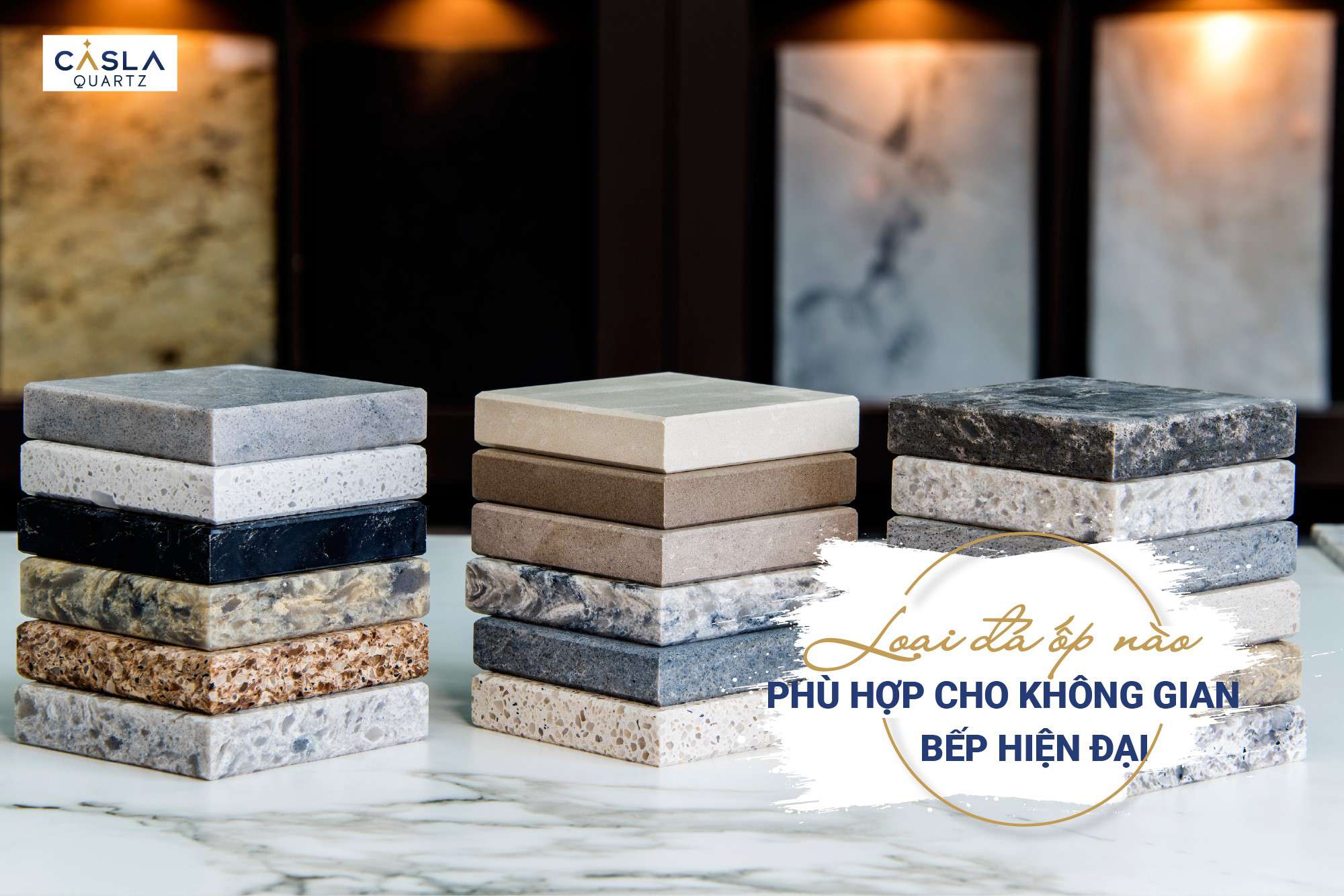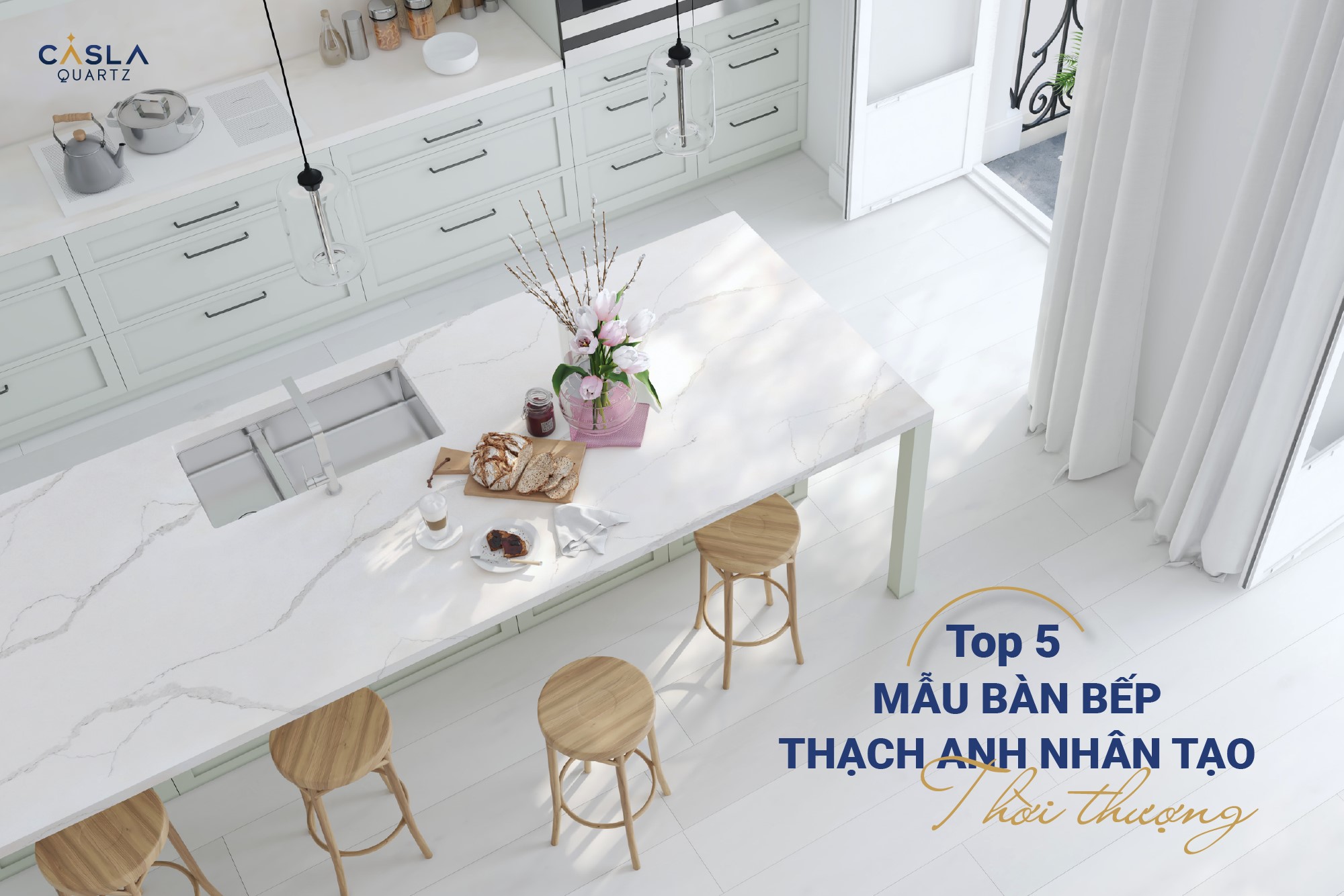Distinguish 3 popular artificial stones: Quartz, Marble and Solid Surface Solid
Three popular types of artificial stone include: Quartz, Artificial Marble and Solid Surface, each with its own characteristics and advantages, suitable for different uses and in different spaces and constructions.
In the construction and interior construction industry, natural stone has been used to make home decoration and wall cladding materials for a long time in human history. However, due to the inherent properties, natural stone has a few disadvantages such as; easy to stain, not shiny, heavy weight or the possibility of cracking due to the natural structure of the stone. Therefore, artificial stone has been invented by man with aesthetic function not inferior to natural stone and has many outstanding advantages.
With the great development of technology and technique, artificial stone has more and more designs, colors, veins and sizes to meet diverse tastes and needs in the market. Among them, there are three popular types of artificial stone, which are artificial quartz (quartz-based artificial stone), artificial marble, and artificial solid surface.
Artificial Quartz (quartz) stone
Artificial quartz stone, also known as quartz-based artificial stone, is an artificial stone formed from a mixture of 93% natural quartz stone powder aggregate, can also add glass powder, 7% polymer component binders, additives and colorants.
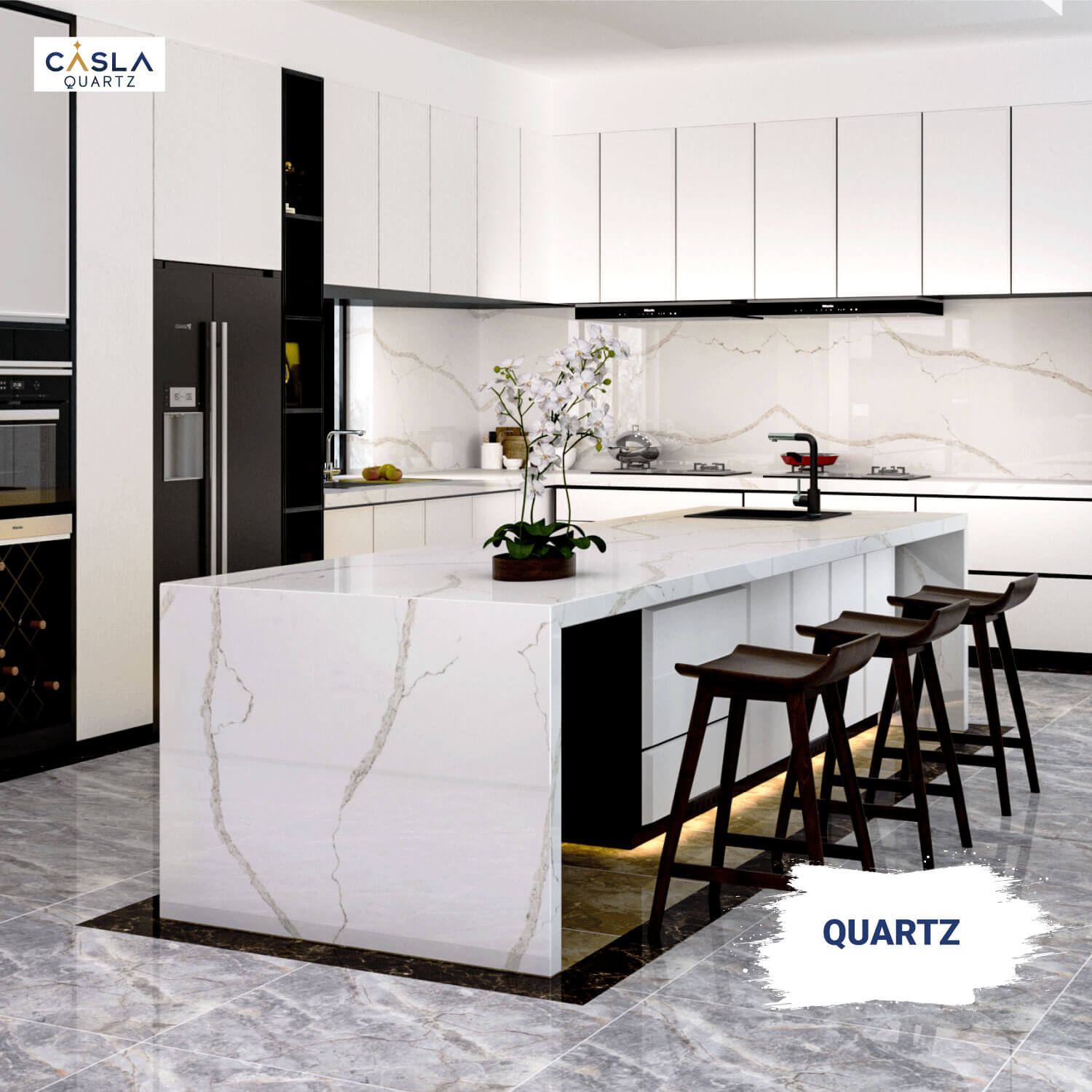
Artificial quartz (quartz) stone is used quite a lot in modern life
Unlike granite, quartz in nature does not form in large blocks and is only small crystals, one by one. Although natural quartz stone has many colors such as purple, pink, agate, amber, it is very difficult to use in construction, interior,... Therefore, quartz-based artificial stone is considered a The answer for those who love the beauty of quartz.
The production process of quartz-based artificial stone is encapsulated as follows:
Aggregates: natural quartz stone is quarried through open-pit mines or from deep underground seams, through the process of removing soil and rock, impurities, cleaning and screening, quartz is crushed according to the different sizes such as fine powder, sand stone, ... and become the main materials for producing quartz-based artificial stone.
Blending: aggregates are mixed separately, then mixed with binders, additives and other colors to form a mixture of materials.
What mixture is poured into a plate mold, pressed with a high-pressure vibrator, forming a solid state?
The pressing plate is put into the drying chamber to increase the durability and bearing capacity
These laminates are then polished and cut to standard sizes
Artificial marble
Artificial Marble, also known as marble, is made up of 90% natural limestone aggregate, crushed sand, glass powder and 7% binder, usually resin glue, colorants and other additives..
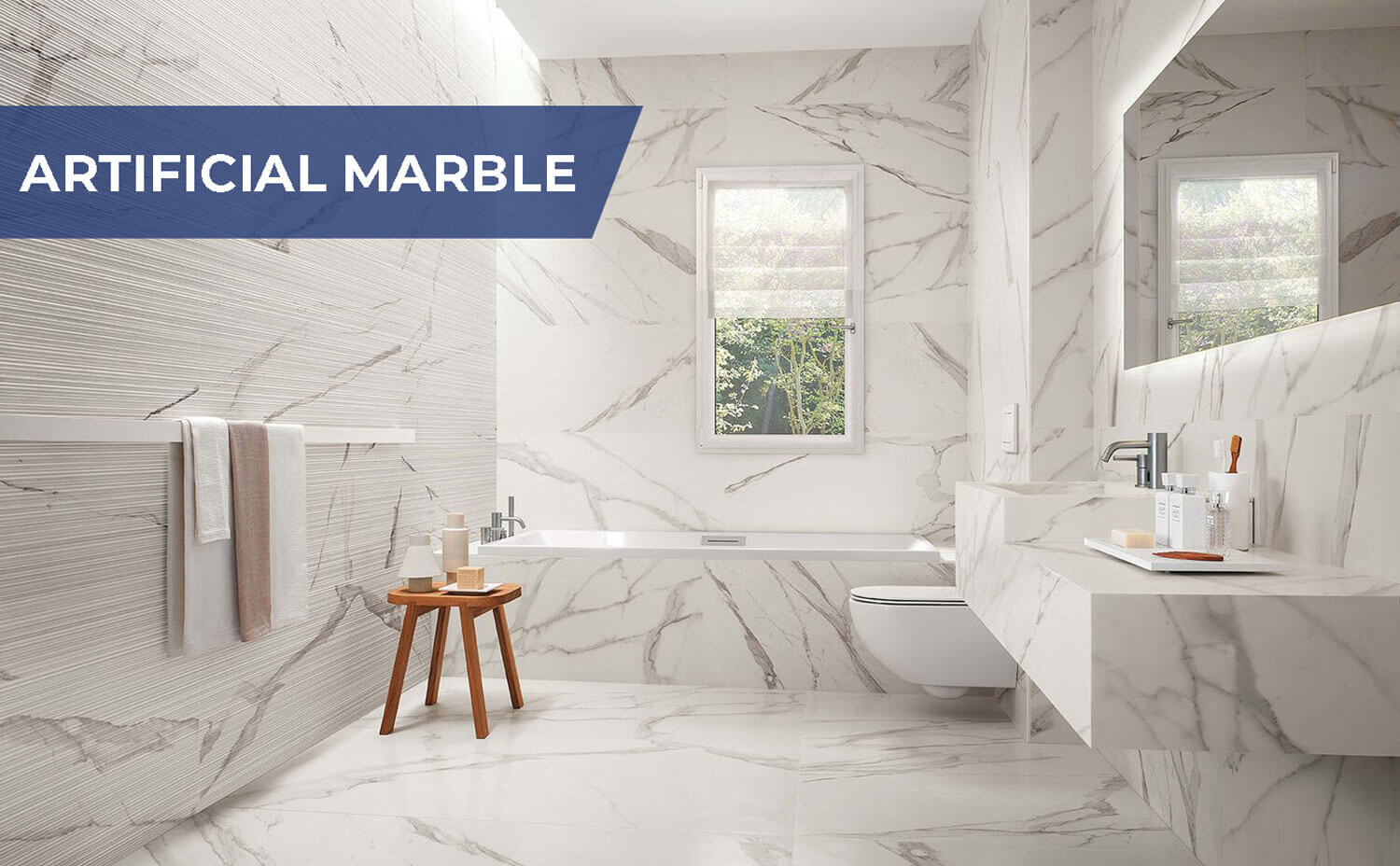
Artificial marble is also chosen by many people
The production process of artificial marble is similar to that of artificial quartz: preparing aggregates, mixing aggregates, mixing aggregates and binders, additives, and coloring agents in a fixed ratio, then adding into the press and then cut into pieces, or put into the mold to press into stone slabs. Final step and polish and cut to standard proportions.
Artificial marble has the same hardness as natural marble, less water absorption, but not as durable to heat and UV rays as natural stone.
Artificial Solid Surface
Invented in 1967 by Dupont with outstanding advantages compared to natural stone is that it is bendable, waterproof, does not need joints and especially: extremely safe for food,
Solid Surface Stone is made of a mixture of ATH (alumina trihydrate), acrylic, epoxy or polyester resins and colorants with a ratio of about 55-65% aggregate, 30-35% binder, other ingredients about 4 -5%, depending on the manufacturer.
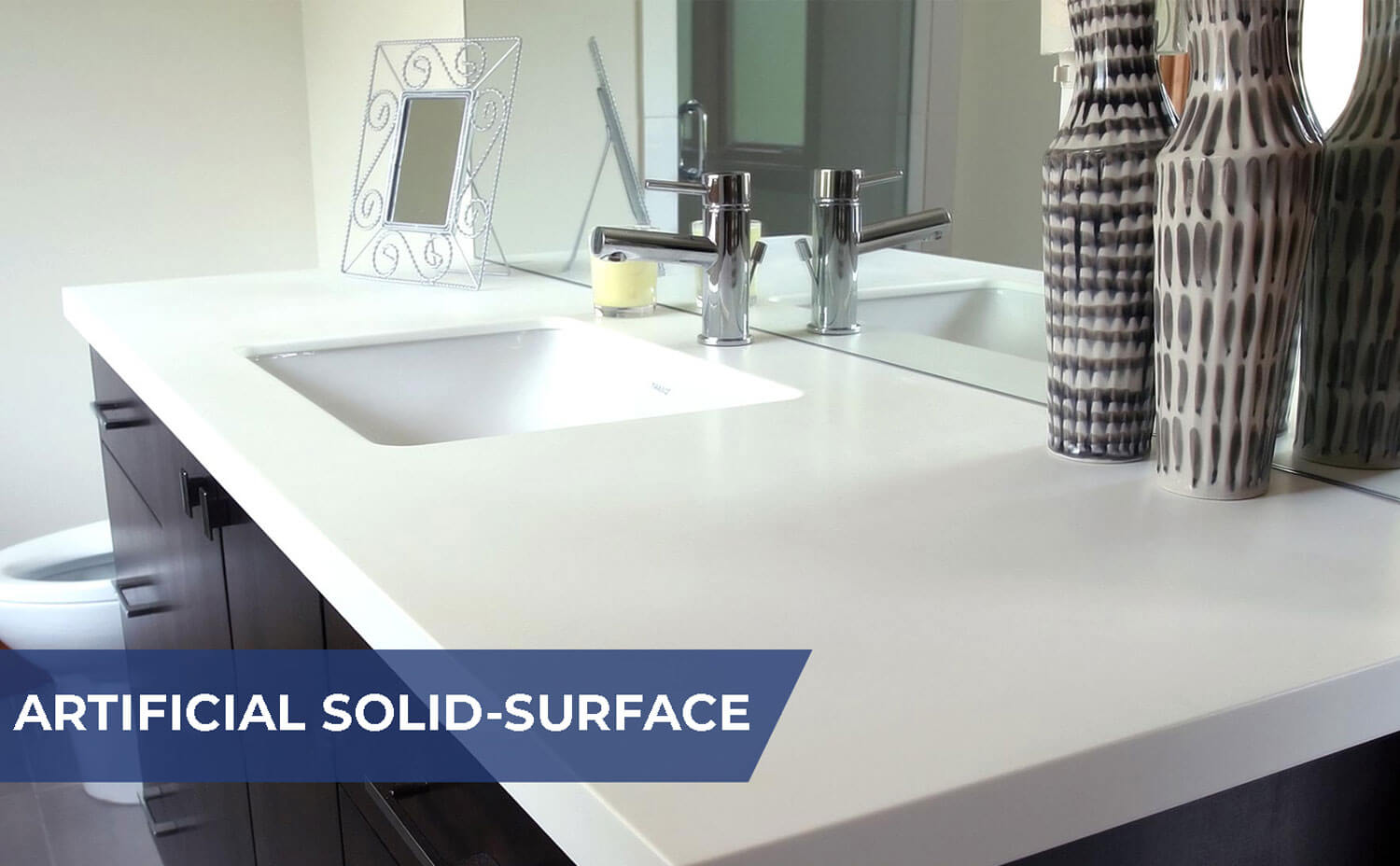
Some famous brands of Solid Surface stone production are: Corian, Montelli, Lotte Staron, Avonite, LG Hi-MACS, Hanex, Krion, Tristone.
Due to its bending, waterproof and rich colors and patterns, so the slab form, Solid Surface stone is also used to cast bathtubs, washbasins, lavabo, etc, …
How to distinguish 3 popular types of artificial stone
If you just look at the speaker or look at the picture, it is very difficult to distinguish these 3 types of artificial stone because each stone has stone veins, rich colors, good looking. Therefore, it is necessary to have real materials to identify each type of Artificial Stone based on some specific properties and a sample of granite to test:
Mass
Solid Surface artificial stone is significantly lighter in weight than other stones.
Reliability
Quartz is more durable than the other 2 types, so it is found that taking granite or a hard material to knock on the edge of the stone, Solid Surface and artificial Marble can chip but Quartz does not..
Stiffness
Use a sharp knife or granite edge to trace the surface of the stone sample, the surface of artificial marble and Solid Surface is easy to scratch while Quartz-based artificial stone has a hard surface so it will usually not be affected.
Water absorption
Pouring water on the stone surface, artificial marble absorbs water much faster than the other two types.
Brightness
Artificial marble and Solid Surface have a smooth glossy surface, almost no grain, much more matte than Quartz stone. As long as the surface of the rock sample is tilted and backlit, it will be very clear.
Waterproof ability
When there are substances that easily leave stains such as wine on the surface, even after wiping off the marble, the stain is clearly visible, and the Quartz and Solid Surface stone has almost no trace.
In short, Quartz stone has many outstanding features such as: hard to chip, scratch resistant, good heat resistance, easy to clean, easy to maintain, high-grade stone surface is also antibacterial, safe for health.
Marble is easy to scratch and chip, so it requires high construction techniques, needs attention to maintenance to keep its original beauty, affected by strong acid foods.
Solid Surface stone easily bends the surface and is easy to cut to increase aesthetics, the bearing capacity, abrasion resistance, heat resistance are not too good, if used for kitchen countertops, note to avoid leaving tools. Cooking is at high heat up the stone surface.


